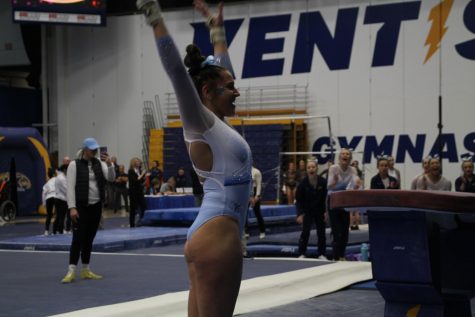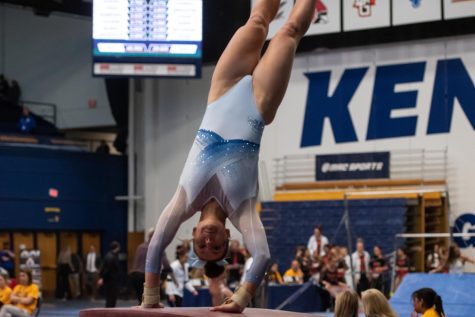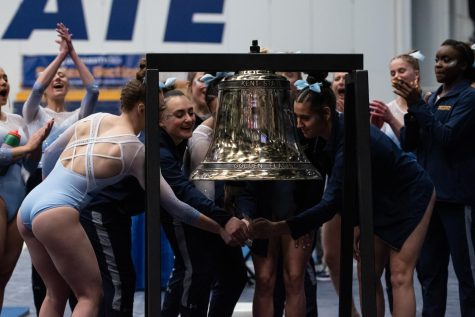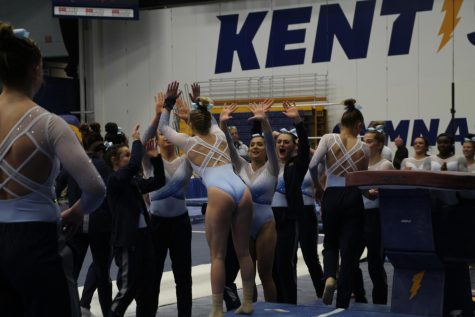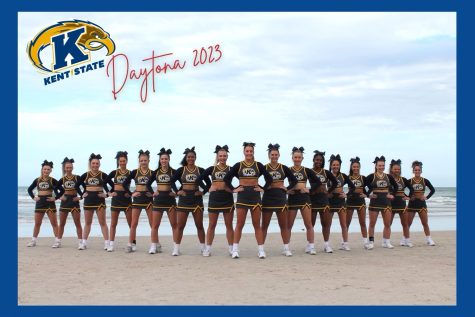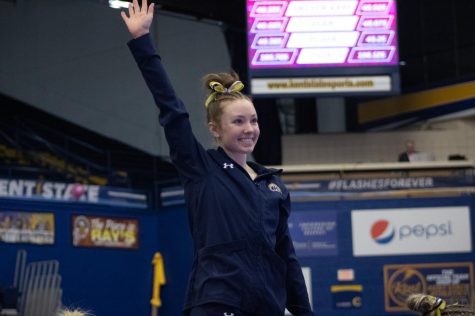Students teach movement skills to all ages
December 4, 2008
Participants’ ages range from 3 to mid-50s
Before Mark Sweeney’s daughter was enrolled in the Movement and Leisure Skills Program, she could not stand on her feet for long periods of time. Now, she can even ride a bike.
“She enjoys the program very much,” said Sweeney, whose daughter has been in the program for five semesters. “She is in high school, where there are not many activities for disabled children who physically can’t keep up with the typical children their age.”
The Movement and Leisure Skills Program is designed to provide physical education activities for individuals of all ages and all performance levels. Some of the participants have a mental or physical disability.
“Throughout the program, participants get a lot of attention,” said Walter Davis, coordinator of the program. “Instructors constantly motivate the participants to do different activities.”
Davis said all students enrolled in the adaptive physical education class work as instructors for the 26 participants of the program. He said the ages of the participants range from 3 to mid-50s.
Amy Wroblewski, senior health and physical education major, said the bond with the participant she was assigned grew beyond the typical “teacher-student” relationship.
“We’ve become pretty close,” she said as her participant asked if they could play soccer.
“After this semester they are a lot more open and comfortable around me.”
Undergraduate students are in charge of planning and implementing the lessons. Graduate students supervise the rest of the instructors. Undergraduates are paired with one or two participants to work in a myriad of activities that are organized as follows:
&bull Gymnastics/dance/fitness.
&bull Basic motor skills.
&bull Manipulation skills/leisure education activities.
&bull Group/sport/exercise activities.
Before the participants are enrolled in the program, Davis said, the parents or guardians of the participants are interviewed over the phone. Also, he said, instructors may contact any of the participants’ doctors or therapists.
Karen Smook-Warren’s three grandchildren have improved their listening skills since they joined the program.
“It’s impressive to see how the relationship between the instructor and the participant has grown,” she said. “I’ve seen how they have developed.”
The 9-, 6- and 5-year-old children have been diagnosed with autism.
For Derek Eddings, senior physical education major, a key to obtain positive results from the participants is to reinforce the special skills they have.
“It’s a different understanding,” Eddings said. “It’s about focusing on the positive. They may not shoot a ball, but they may be able to dribble it.”
He said the participants experience significant changes in their social skills.
“After the semester, they may give high-fives or handshakes,” Eddings said. “They learn things that they can use outside the program.”
Learning how to teach can also be rewarding on a personal level to the instructors.
“I have more patience than I have before,” said Kyle Von Carlowitz, senior human movement major. “Sometimes they (participants) had a bad day and you have to be able to adjust around whatever they want to do. I learned to be able to adjust and adapt.”
Contact minority affairs reporter Regina Garcia Cano at [email protected].












